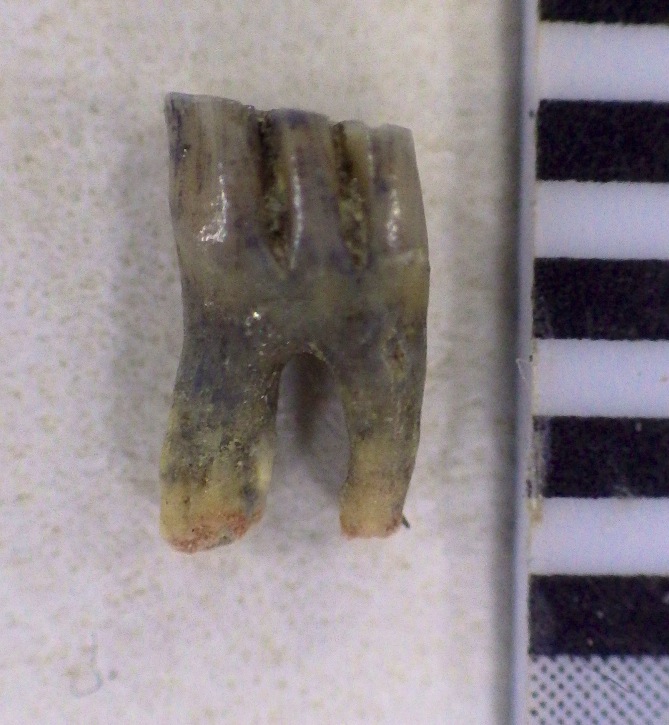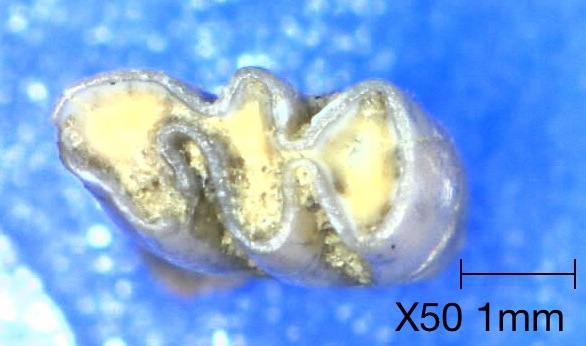 For this week's Fossil Friday I'm sticking with teeth. In contrast to last week's large camel molar, this time I chose the other end of the size spectrum with a tiny tooth that's only about 3 mm long.For all the attention that large animals receive, rodents and other small mammals are probably the most common vertebrate fossils in the Pleistocene deposits around Diamond Valley Lake. One of the more common rodents in our collection is the genus Neotoma, the packrat.Packrats (or woodrats) are in the Family Cricetidae, the same family that includes voles, lemmings, and hamsters. They shouldn't be confused with the brown rat (genus Rattus), which is what many people think of when they hear "rat". Rattus (including the white forms commonly used in laboratories) is a member of the Family Muridae. Rattus is only distantly related to the cricetids and was introduced into the Americas by humans.Packrats have a reduced dentition, with only one incisor and three molars in each half of both the upper and lower jaws. The molars have five cusps that are arranged in such a way that as they wear down they form three enamel-edged oval basins in occlusal view:
For this week's Fossil Friday I'm sticking with teeth. In contrast to last week's large camel molar, this time I chose the other end of the size spectrum with a tiny tooth that's only about 3 mm long.For all the attention that large animals receive, rodents and other small mammals are probably the most common vertebrate fossils in the Pleistocene deposits around Diamond Valley Lake. One of the more common rodents in our collection is the genus Neotoma, the packrat.Packrats (or woodrats) are in the Family Cricetidae, the same family that includes voles, lemmings, and hamsters. They shouldn't be confused with the brown rat (genus Rattus), which is what many people think of when they hear "rat". Rattus (including the white forms commonly used in laboratories) is a member of the Family Muridae. Rattus is only distantly related to the cricetids and was introduced into the Americas by humans.Packrats have a reduced dentition, with only one incisor and three molars in each half of both the upper and lower jaws. The molars have five cusps that are arranged in such a way that as they wear down they form three enamel-edged oval basins in occlusal view:
 Different genera have distinctive cusp patterns, and in fact each individual tooth position has a unique, easily-identified pattern (see the images at this site). This particular tooth is the first lower right molar from Neotoma.There are a number of species of Neotoma known from California, and unfortunately the different Neotoma species are not as easily identified on the basis of an individual tooth. So, at least for now, this tooth can only be identified as Neotoma sp.
Different genera have distinctive cusp patterns, and in fact each individual tooth position has a unique, easily-identified pattern (see the images at this site). This particular tooth is the first lower right molar from Neotoma.There are a number of species of Neotoma known from California, and unfortunately the different Neotoma species are not as easily identified on the basis of an individual tooth. So, at least for now, this tooth can only be identified as Neotoma sp.
